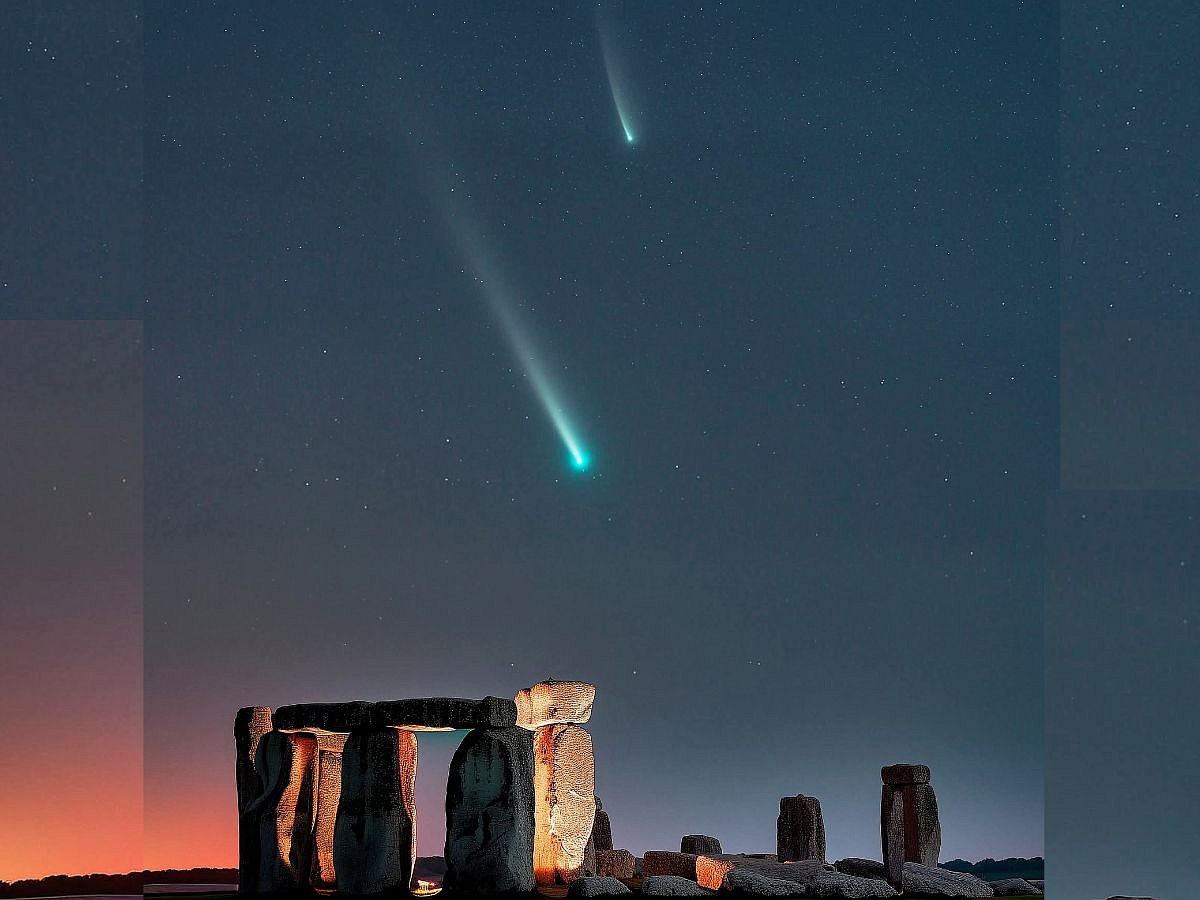Upcoming Comet SWAN and Lemmon: Viewing Guide
This month, sky-watchers are in for an extraordinary treat as two comets make their closest approaches to Earth. These celestial visitors, C/2025 A6 Lemmon and C/2025 R2 SWAN, promise to deliver a stunning display for those eager to observe them. With their unique characteristics and long orbital paths, these comets offer a rare opportunity to glimpse the remnants of our solar system’s early history.
Comet Details and Discovery
C/2025 A6 Lemmon was first identified on January 3, 2025, while C/2025 R2 SWAN was detected more recently on September 10, 2025. Both comets are composed of ice, frozen gases, and rock, which create their spectacular glowing tails as they approach the sun. This information comes from Qicheng Zhang, a postdoctoral fellow at Lowell Observatory in Flagstaff, Arizona.
Astronomers are particularly excited about these long-period comets, which take hundreds to thousands of years to complete their orbits. Comet SWAN is expected to return in approximately 650 to 700 years, while Lemmon will not be seen again for about 1,300 years, according to Carrie Holt, an astronomer at Las Cumbres Observatory.
Best Viewing Times
For those hoping to catch a glimpse of these comets, timing is crucial. Comet SWAN is best viewed in the early evening shortly after sunset, while Lemmon is currently visible just before sunrise but will soon transition to evening visibility. Both comets will be near the sun from Earth’s perspective, creating a limited window for observation.
On October 6, the Virtual Telescope Project captured an image of Comet SWAN, showcasing its characteristic green gas and trailing tail. The comets are expected to pass closest to Earth on October 20 and 21, respectively, with SWAN coming within 24 million miles (38.6 million km) and Lemmon at 55 million miles (88.5 million km).
The Science Behind the Comets
The greenish hues observed in the comas of both comets are attributed to diatomic carbon (C₂) molecules, which are released from their icy nuclei as they heat up while approaching the sun. These long-period comets likely originated near giant planets like Jupiter before being nudged into the distant Oort Cloud, where they have remained frozen for billions of years.
As these comets approach the sun, they provide astronomers with a glimpse into the original materials that contributed to the formation of planets. “When one gets nudged back inward, we see materials that have hardly changed since the solar system’s birth,” Holt explains. This makes them invaluable for understanding planetary system development.
Visibility and Observational Tips
Visibility of the comets varies by hemisphere. Currently, Lemmon is more easily observed from the Northern Hemisphere, while SWAN favors the Southern Hemisphere but is becoming accessible to northern observers. Lemmon is expected to brighten through early November, while SWAN will begin to fade soon after its closest approach.
Starting in November, Lemmon will disappear behind the sun and will only be visible to Southern Hemisphere viewers. For those in darker locations, Lemmon may become visible to the naked eye or with binoculars, making it an exciting opportunity for amateur astronomers.
Discovery Background
Comet SWAN was discovered through images taken by the Solar Wind ANisotropies (SWAN) instrument on the Solar and Heliospheric Observatory spacecraft, a collaborative effort between NASA and the European Space Agency. In contrast, Lemmon was found by the Mount Lemmon Observatory in Arizona during the NASA-funded Catalina Sky Survey, which focuses on identifying near-Earth objects.
Carson Fuls, the director of the Catalina Sky Survey, noted that Lemmon was initially too faint and distant to show the dramatic tails now visible. He believes Lemmon could be the best comet of the year for casual observers, as it may soon be visible with just binoculars or even the naked eye.
FAQs
When is the best time to see Comet SWAN?
Comet SWAN is best viewed shortly after sunset in the early evening, especially around its closest approach on October 20.
How long will these comets be visible?
Lemmon is expected to remain visible through early November, while SWAN will begin to fade shortly after its closest approach.
What causes the green color in the comets?
The greenish hue in the comas of the comets is due to diatomic carbon (C₂) molecules released from their icy nuclei as they approach the sun.
Conclusion
As two remarkable comets approach Earth this month, sky-watchers have a unique opportunity to witness a celestial event that won’t occur again for centuries. With careful planning and the right conditions, observers can enjoy the beauty of these cosmic visitors. Be sure to mark your calendars for their closest approaches and prepare for a memorable stargazing experience.
Also Read:
Dubai’s First Interchange: A Milestone in Infrastructure
Emirati Researcher Advocates for Youth at European Parliamen







